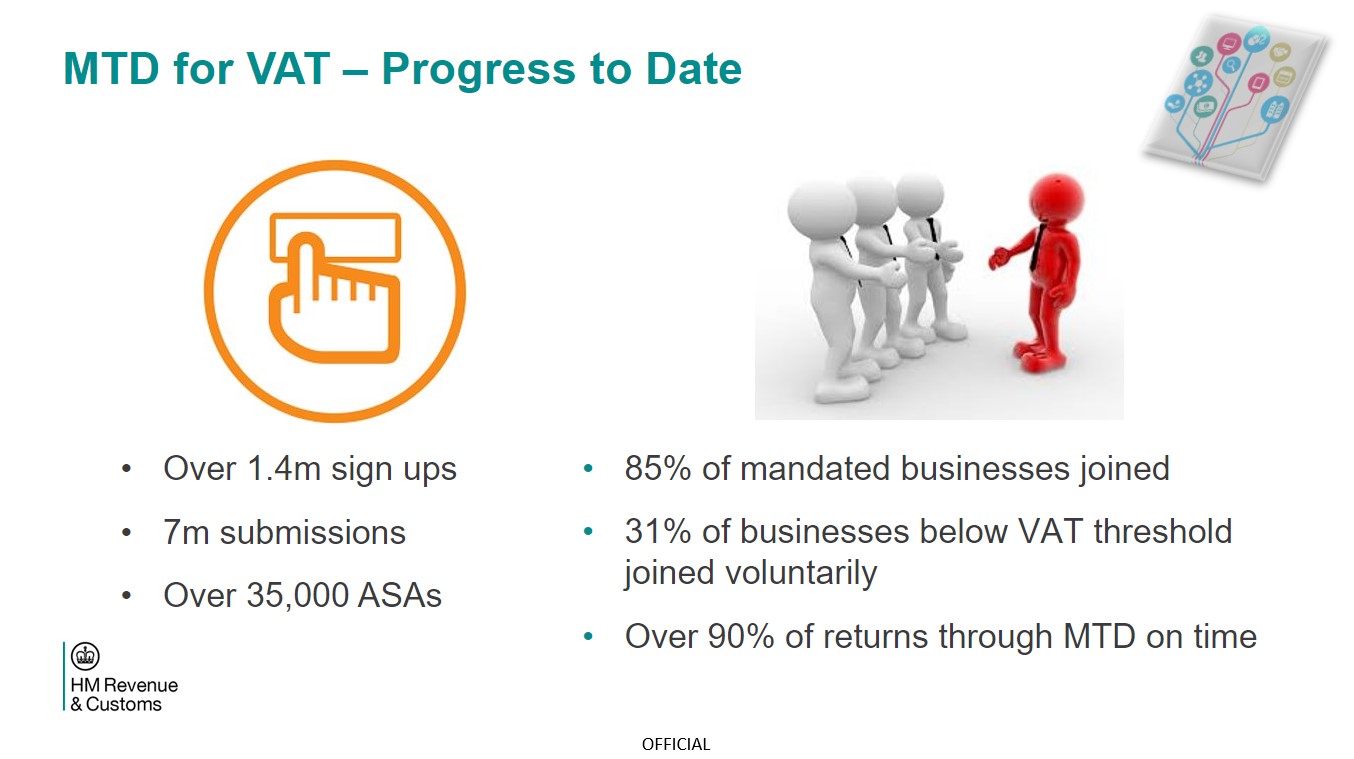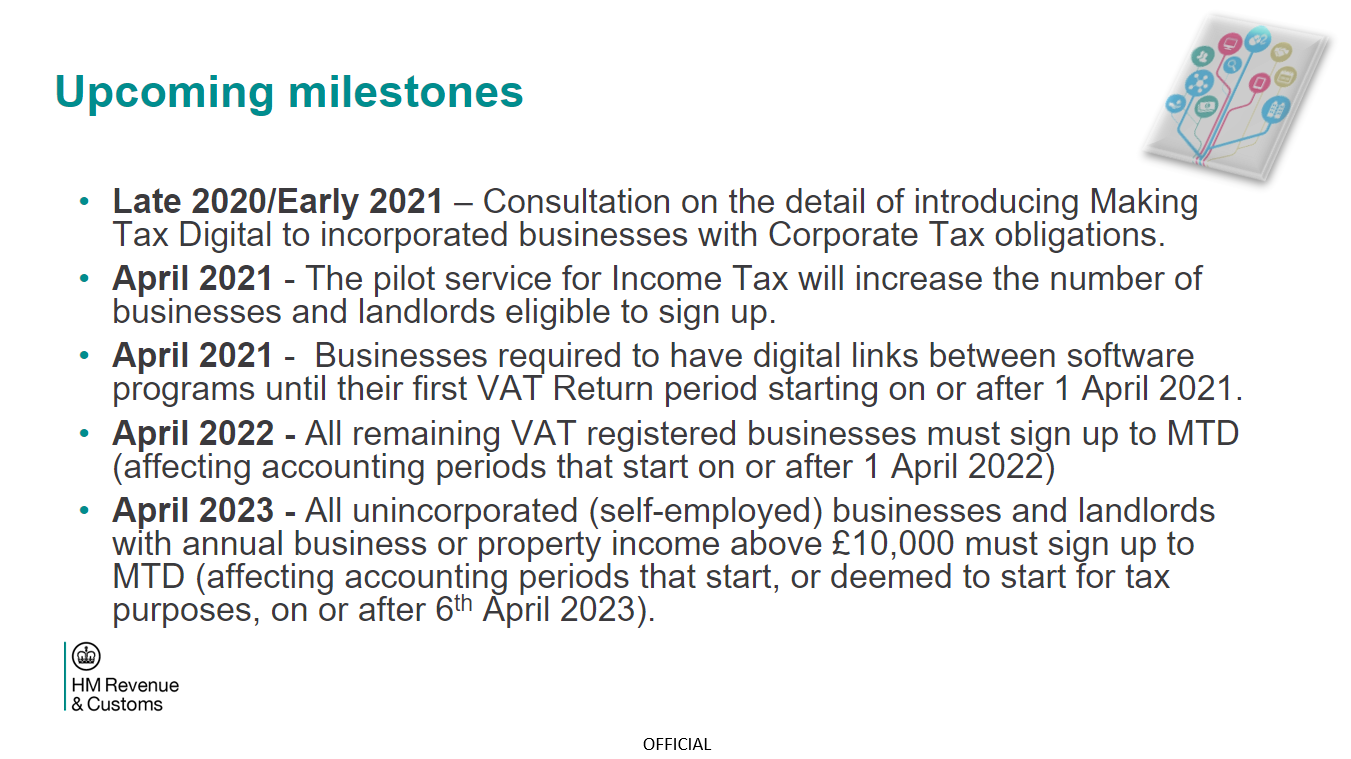As we wrap up a very interesting year, ARKK hosted the last MTD webinar for 2020. These have aimed to inform businesses and tax professionals on how to remain compliant with the MTD soft-landing period soon to end and how to leverage the full benefits of tax technology.
Our most recent webinar 'Getting you ready for MTD phase 2' can be viewed here, but if you'd prefer an overview of the captivating 60-minute session, continue reading.
The webinar attendees were as follows:
Christian Lacey-Brennan (HMRC)- Head of Parliamentary Handling and Senior Stakeholder Engagement
Alex Baulf (Grant Thornton) - International Indirect Tax Director
Gordon Humes (ARKK) - Services Executive
Roi Lustik-Cohen (ARKK) - Chief Technology Officer
Why Making Tax Digital?
The move towards MTD is important for HMRC. As Christian explained, the UK tax administration has the ambition to become one of the most digitally advanced in the world and MTD plays a huge part in that. VAT is the first tax to be brought under the MTD umbrella but HMRC has already set out a roadmap to incorporate other taxes in the future.
Making Tax Digital doesn't only help streamline processes and increase productivity, but it also reduces errors. Christian commented that avoidable mistakes cost the UK £8.5 billion between 2018-2019, if companies implemented a suitable tax solution it would help to significantly reduce this cost.
There have been some impressive stats so far on the number of MTD submissions and the percentage of businesses that have joined the mandate.

The benefits of tax transformation
We've mentioned on numerous occasions the benefits that tax transformation can have on not just the tax function but the wider business. HMRC research discovered that micro businesses have seen productivity increases of around 10% due to digital adoption, not to mention time savings.
Christian stated that the average compliance time in Europe and central Asia had fallen from 473 to 225 hours per year within 14 years, a decrease of over 50%. This was mainly due to the introduction of e-filing and e-payments across Europe and the simplification of tax systems in individual economies. This only reinforces that the benefits of a fully automated tax solution shouldn't be underestimated.
It was also revealed that HMRC had just finished publishing its consultation of MTD for Corporation Tax. Although this is not likely to come into effect until April 2026, HMRC wants to get feedback and insights from companies and tax professionals early in the process. If you'd like to view the consultation, it's available here.
MTD roadmap
We're sure that many of you are aware of the upcoming MTD milestones, however, HMRC reiterated some of the crucial points along the tax administrations journey to full digitalisation.

HMRC’s last section was regarding the importance of digital links, which are the fundamental change for phase 2 of the MTD mandate. There still appears to be some confusion around the requirements of the second phase of MTD so it's crucial tax professionals remain up to date on digital links before the soft launch period ends.
MTD as a catalyst for wider transformation
Some organisations will simply choose to comply with the MTD mandate, not taking full advantage of the benefits a digital tax solution can offer. Alex from Grant Thornton referred to this as a 'sticky plaster' approach. The true aim of tax digitalisation should be to move towards real-time tax reporting that allows granular integration of the data if needed.
It's also important to remember that tax technology, is technology. So, involvement from IT and wider stakeholders will be needed to effectively implement a solution.
Checking your data for inconsistencies
The final section of our webinar was hosted by Gordon and Roi from ARKK. Gordon, from our services team, gave a demo of for:sight and the core functionality that customers use and Roi’s demo was on the platforms machine learning capability. Our consistency checker, powered by machine learning, allows for:sight to identify and flag inconsistent transactional VAT data for manual review. To see the full demo you can view the webinar on-demand.
For more information on for:sight click here and if you'd like to speak to a member of our team about your tax transformation journey please get in touch.

